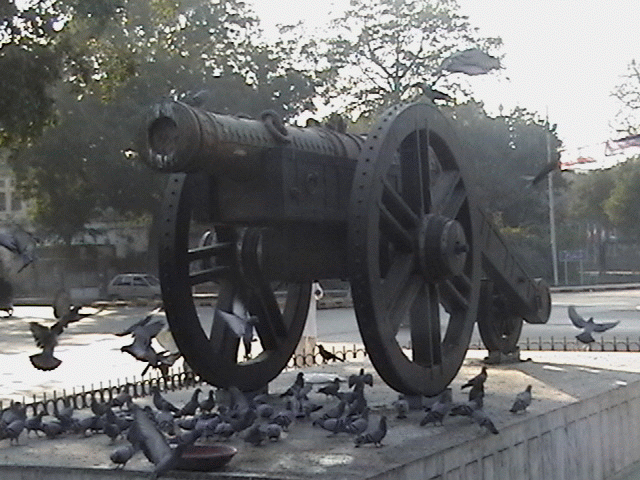

Zamzamma

Bhangian di Tope / Kim's Gun
Another landmark of Lahore is the "Zamzamma" - an 18th century heavy artillery gun that is mounted on a platform in the midst of the Shahrah-e-Quaid-e-Azam, previously the famous The Mall Road. The gun was manufactured and cast in wax-technique in bronze on the orders of Afghan King Ahmed Shah Abdali in 1757 by Nazir Shah, the chief minister of Ahmad Shah Abdali. It is said that the people of Lahore were asked to give their kitchen utensils for the cauldron. It has the date of manufacture, names of the monarch and the technician along with verses in Persian moulded with floral patterns all over the barrel. The gun bears two inscriptions, one on its muzzle and the other on its back. According to the former inscription, it was cast by Shah Nazir under the orders of Shah Wali Khan. The last line of the second inscription forms a chronogram - a phrase whose each letter has a numerical value which when added gives a specific date - 1169 Hijri (1755-56 AD).
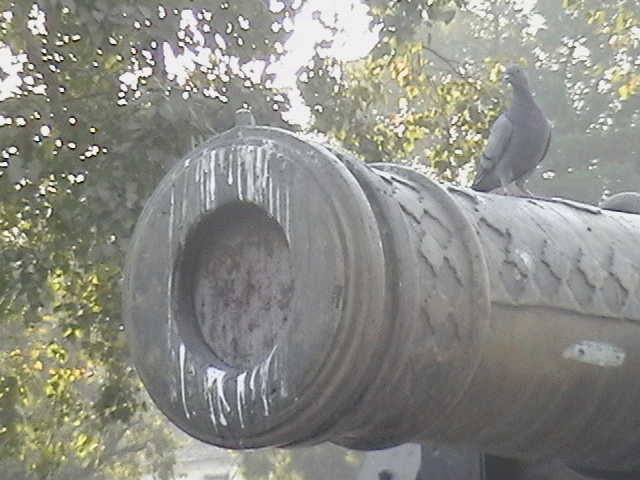
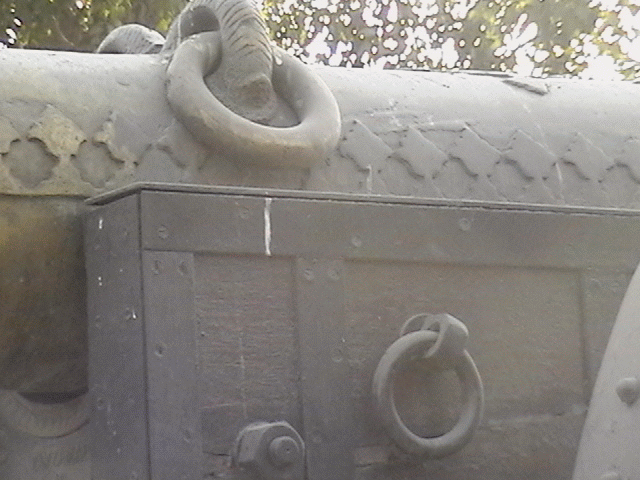
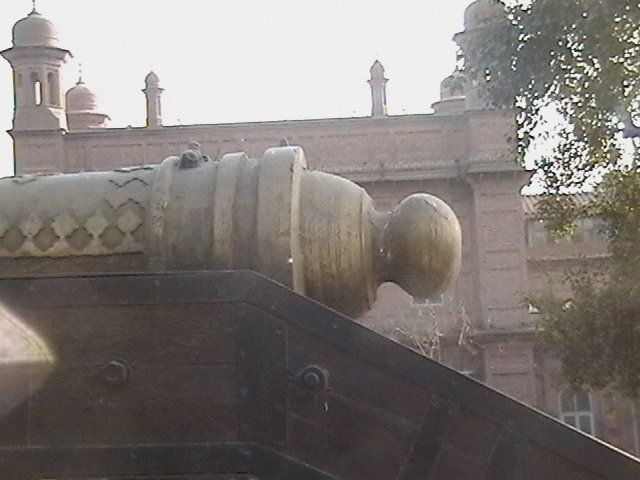
Made of an alloy of copper and brass, this 14 feet and 4.5 inch long gun with a nine-and-a-half-inch muzzle is one of the largest specimens of casting in the Sub-continent. The gun played havouc on many a battlefield for more than 100 years. Ahmad Shah Abdali used these guns against the Marathas in the Third Battle of Panipat (1761 AD). After the battle, due to the lack of suitable means of transportation, he left the Zamzamma gun with Khwaja Ubaid, the Governor of Lahore. He took the second gun with him but it was washed away in the Chenab when he was trying to cross the river.
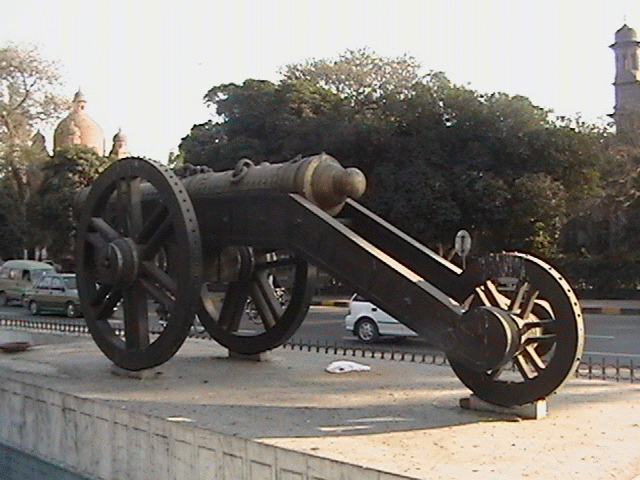
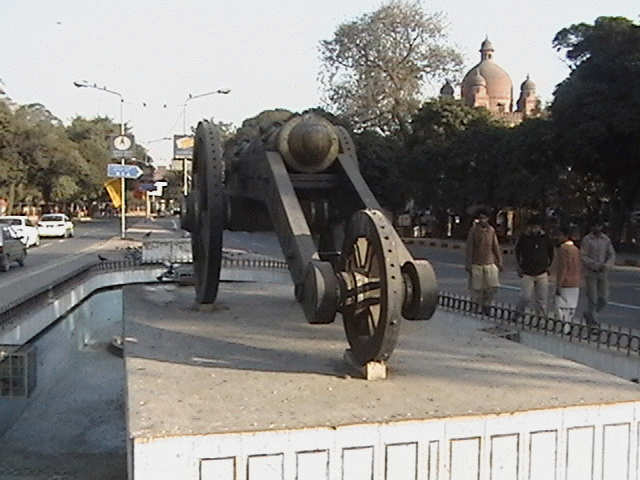
In 1762 AD, Hari Singh Bhangi, called so for his love of Bhang - an indigenously made wine, attacked the territories of the Khwaja and seized the Zamzama. After two years Lehna Singh and Gujjar Singh Bhangi got hold of it and they gave it to Charat Singh Shukerchakia as his share in the spoils. The Bhangi Sardars thought that Charat Singh would not be able to carry this gun with him and it would remain with them. But contrary to their expectations, Charat Singh successfully carried this gun to his fort at Gujranwala. From Charat Singh, Zamzama was snatched by the Pathans of Chhata who took it to Ahmadnagar where it became a bone of contention between the Pathan brothers Ahmad Khan and Pir Muhammad. In the fight that ensued, two sons of Ahmad Khan and one of Pir Muhammad were killed. In this fight, Gujjar Singh Bhangi sided with Pir Muhammad. After the victory, the gun was restored to Gujjar Singh. After two years, the gun was wrested by Charat Singh Shukerchakia from whom it was once again snatched by the Pathans. Next year, Sardar Jhanda Singh Bhangi defeated the Pathans of Chhata and brought the gun to Amritsar.
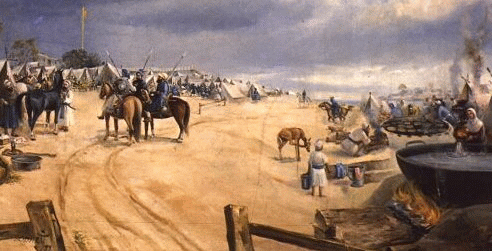
In 1802, Ranjit Singh, after defeating the Bhangis, got hold of the gun. He used it in the battles of Daska, Kasur, Sujanpur, Wazirabad and Multan. Here it would be injustice if the account of battle for Multan is not made for the brave souls of Multan resisted till the last to save Multan from the Sikh onslaught. By the beginning of 1818 Ranjit Singh succeeded to raise a big army consisting of well equipped 25,000 soldiers under his most trusted General, Diwan Misr Chand. The famous Zamzamma Gun was also transported to Multan and the city was stormed with hundreds of one ton heavy steel balls. As Stinger surface to air missiles are attributed to the fall of the Soviet aggression in Afghanistan for downing a number of Russian aircraft, the Zamzamma is also said to have made the difference and broke the walls of the Multan Fort. Nawab Muzaffar Khan Saddozai who was the Governor of Multan for the past thirty nine years fought courageously but failed to save Multan from the clutches of Sikhs and laid down his life along with his five sons saving Multan. After capturing the Fort the Sikh soldiers were let loose to arson and debauchery and recorded in history, ""The city and Fort were now given up to be plundered by the Sikh troops. Great were the ravages committed by the Sikhs on this occasion. About 400 to 500 houses in the Fort were razed to the ground and their owners deprived of all they had. In the town many houses were set on fire and nothing was left with the inhabitants that was worth having. Hundreds were killed in city sack, and indeed there was hardly a soul who escaped both loss and violence".
In the siege of Multan, the gun was badly damaged and was removed to Lahore and decommissioned from the service. From 1818 to 1870, it was placed outside the Delhi Gate. For its prolonged possession with the Bhangi Sikhs, the gun came to be called as "Bhangian-di-Tope", the gun of the Bhangis.
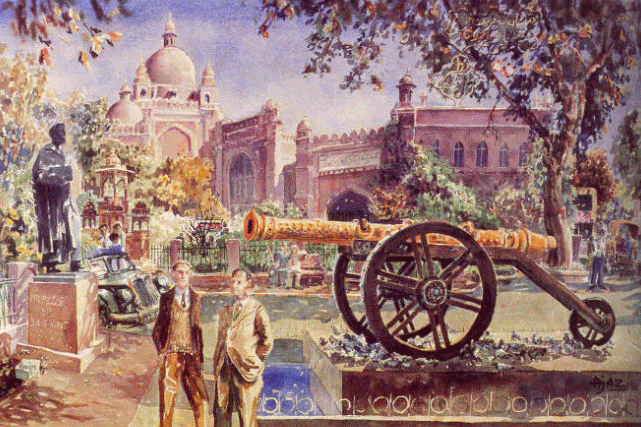 Came the British and along with them the great
novelist and story write Rudyard Kipling. After the Anglo-Sikh battle of Firuzshah on December 21, 1845, the gun came
into the possession of the British. From Dehli Gate, it was removed to be placed in front of "Exhibition
Hall" (present day Tollington Market). With completion of Jubilee Building of
central museum of Lahore, it was moved a few yards up the "Exhibition Road". When the Duke of Edinburgh visited
Lahore in February, 1870, the gun was placed opposite to the gate of the
museum where it rests to date. Kipling found this a good site to relax and
recall his memories of his stay in India. "Who hold Zam-Zammah,
that fire-breathing dragon', hold the Punjab; for the great green-bronze
piece is always first of the conqueror's loot"…Kim Rudyard Kipling. Thus the
gun came to be known as the Kim's gun.
(painting by Dr Ajaz Anwar)
Came the British and along with them the great
novelist and story write Rudyard Kipling. After the Anglo-Sikh battle of Firuzshah on December 21, 1845, the gun came
into the possession of the British. From Dehli Gate, it was removed to be placed in front of "Exhibition
Hall" (present day Tollington Market). With completion of Jubilee Building of
central museum of Lahore, it was moved a few yards up the "Exhibition Road". When the Duke of Edinburgh visited
Lahore in February, 1870, the gun was placed opposite to the gate of the
museum where it rests to date. Kipling found this a good site to relax and
recall his memories of his stay in India. "Who hold Zam-Zammah,
that fire-breathing dragon', hold the Punjab; for the great green-bronze
piece is always first of the conqueror's loot"…Kim Rudyard Kipling. Thus the
gun came to be known as the Kim's gun.
(painting by Dr Ajaz Anwar)
All Photographs of the Zamzamma were taken exclusively by the Webmaster Pakistanpaedia |
|
|
Related Links: | Kim's Gun Stamp | Kim by Rudyard Kipling | Lahore as Kipling Knew It | |
|
|